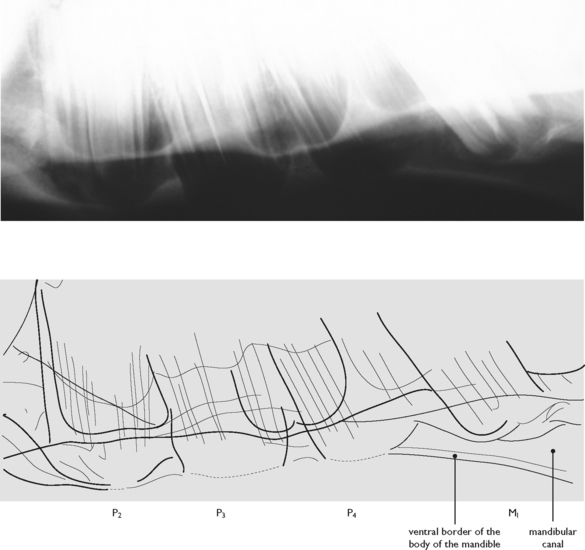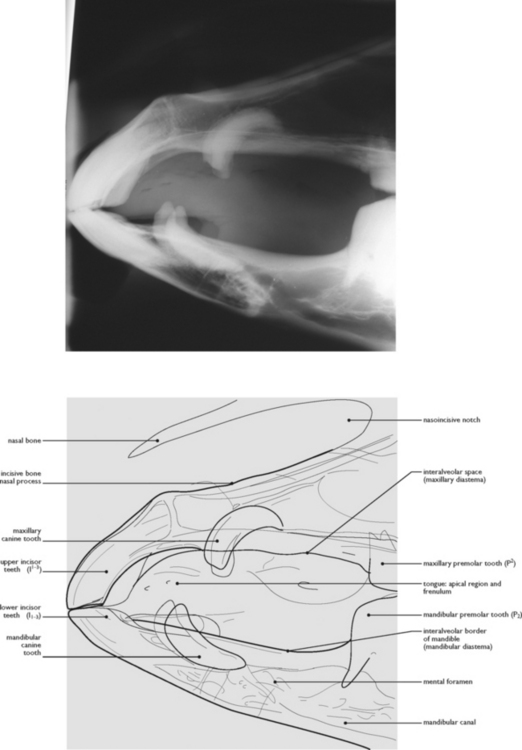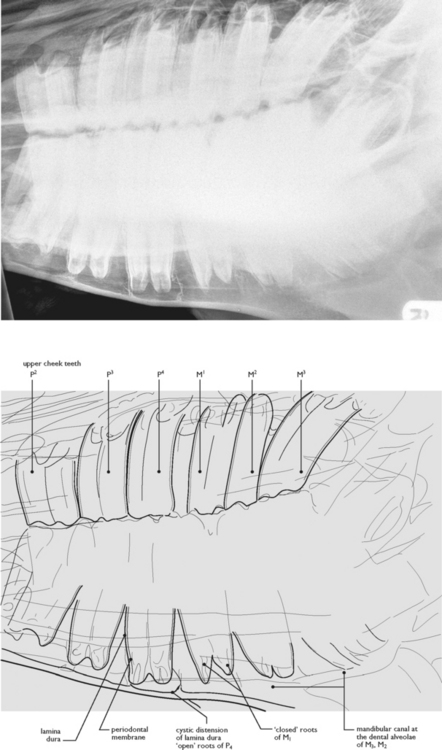9 DIAGNOSTIC IMAGING OF THE HEAD, WITHERS, MANUS AND PES
Clinical considerations for diagnostic imaging
Epiphyseal fusion is a gradual process. The epiphyseal growth plate stops producing new metaphyseal bone and becomes itself converted to bone, uniting the epiphysis with the shaft. The process can be traced radiographically or histologically until fusion is complete. Gross anatomical fusion, however, is ‘complete fusion’, when a standard maceration technique fails to separate the epiphysis from the shaft. For the horse, the results of some investigations by these three methods of study are summarized by Getty in Sisson & Grossman (1975, pp 272 & 298).

A similar developmental sequence of palpable prominences in the maxillary bone occurs, between the ages of 2 and 5 years, at the level of the infraorbital foramen, when the upper permanent maxillary premolar teeth (P2–P4) develop and eventually replace the temporary maxillary premolar teeth. At about 2 years of age, the palpable infraorbital foramen lies dorsal to the prominence related to p3 and the developing P3 tooth. At about 3½ years of age, all three maxillary prominences are in line with the supraorbital foramen. See Fig. 1.55 and compare the positions of p2 and p3 and the infraorbital foramen in the foal with those shown for P2, P3 and the infraorbital foramen in the adult horse (Fig. 1.44). None of these mandibular or maxillary bony prominences are seen in the horse at 6 years of age (Fig. 1.44).





